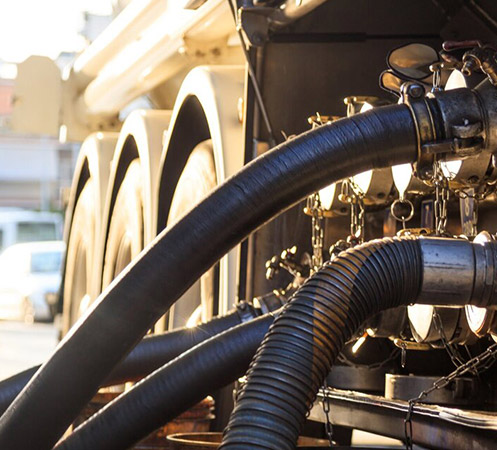Key Benefits
- Take the guesswork out of FTC claims
- Receive the highest FTC rebate
- Recover under-claimed FTC rebates
- Save admin time
Key Features
- Map real-time location & fuel usage data
- Calculate non-public road usage quickly & reliably
- Digital calculation on various FTC entitlements
- Use current usage data to support retrospective claims

Maximise Fuel Tax Credits
Fuel Tax Credits (FTC) can be applied against the cost of fuel consumed for any vehicle driven for business purposes on non-public roads. This FTC module uses the latest algorithms, map data and business intelligence to maximise the FTC claim across your fleet. MTData partners with a third party who use an FTC calculation module that calculates fuel tax credits from usage data monthly and presents the datain the format required by the ATO, saving time when lodging tax and submitting FTC claims.
Our FTC module can perform retrospective calculations going back up to four years so you can cover any under-claims or missing claims your business may be entitled to from the past. This powerful FTC data also helps identify under-utilised and over-spent vehicles in your business so you can optimise your fleet operations and minimise wasted operational costs.
What you want to know about Fuel Tax Credits
Fuel Tax Credits are an important entitlement for many commercial transport operators, based on apportioning fuel use between eligible activities. In March this year, the on-road FTC rate was temporarily reduced to 0 following the government’s decision to halve the fuel excise rate. These measures reverted back in September and since then the price of fuel has been increasing. Fuel is one of the biggest costs for businesses operating commercial fleets so it is important for businesses to understand their fuel tax credit entitlements.
What are fuel tax credits?
Businesses can claim fuel tax credits in their business activity statement (BAS) in the same way as they claim GST credits. Claiming regularly means more cash flow to your business and helps offset the price of fuel.
The amount of fuel tax credits a business can claim depends on when the fuel is acquired, the fuel used, and what activity the fuel is used in. The Fuel Tax Act 2006 allows commercial vehicle operators to claim a rebate for fuel excise they have paid for various eligible activities including activity that is not on a public road, activity on a public road in heavy vehicles, and when operating auxiliary equipment.
The fuel tax credit rates change regularly, and you need to use the rate that applies on the date you acquired the fuel.
A business cannot claim Fuel Tax Credits for fuels that have been used in light vehicles of 4.5 tonnes GVM or less, traveling on public roads, fuel used for private purposes, and fuel that a business has acquired but did not use.
Calculating Fuel Tax Credits
The Fuel Tax Act 2006 and regulations do not set out any methods that an entity must use to apportion taxable fuel.
The most common methods which are considered fair and reasonable are:
- Basic method – determining the quantity of taxable fuel used for each business activity.
- Percentage use method – where a reliable percentage of taxable fuel used for each business activity, for a sample period, is applied over a number of tax periods.
Accurately determining public and non-public road use with precision is a complex spatial analysis task. The ATO does not provide a definitive list of public and non-public roads or a single accepted methodology for calculation. Manually calculating Fuel Tax Credit takes hours of work often resulting in conservative FTC amounts.
Automating the Fuel Tax Credit Calculation
Prism’s fuel tax credit calculator automates the fuel apportionment calculation process using high-frequency GPS position data from your telematics devices combined with our bespoke mapping data covering national road and land features.
What used to require weeks of manual work using limited sample data can be produced by Prism in minutes, using complete and highly detailed data of live vehicle activity.
Prism implements an approach that can be considered as a detailed version of the Estimated Use method, although the output includes not only an estimate of the amount of fuel used but also a percentage allocation of the fuel across each business activity.
Ready to get more from your fleet data? Get in touch us to speak to an expert.

